As global food demand rises, climate change is hitting our staple crops (The Conversation)

Shutterstock
Andrew Borrell, The University of Queensland
Climate change and extreme weather events are already impacting our food, from meat and vegetables, right through to wine. In our series on the Climate and Food, we’re looking at what this means for the food chain. ![]()
While increases in population and wealth will lift global demand for food by up to 70% by 2050, agriculture is already feeling the effects of climate change. This is expected to continue in coming decades.
Scientists and farmers will need to act on multiple fronts to counter falling crop yields and feed more people. As with previous agricultural revolutions, we need a new set of plant characteristics to meet the challenge.
When it comes to the staple crops – wheat, rice, maize, soybean, barley and sorghum – research has found changes in rainfall and temperature explain about 30% of the yearly variation in agricultural yields. All six crops responded negatively to increasing temperatures – most likely associated with increases in crop development rates and water stress. In particular, wheat, maize and barley show a negative response to increased temperatures. But, overall, rainfall trends had only minor effects on crop yields in these studies.
Since 1950, average global temperatures have risen by roughly 0.13°C per decade. An even faster rate of roughly 0.2°C of warming per decade is expected over the next few decades.
As temperatures rise, rainfall patterns change. Increased heat also leads to greater evaporation and surface drying, which further intensifies and prolongs droughts.
A warmer atmosphere can also hold more water – about 7% more water vapour for every 1°C increase in temperature. This ultimately results in storms with more intense rainfall. A review of rainfall patterns shows changes in the amount of rainfall everywhere.

Shutterstock
Falling yields
Crop yields around Australia have been hard hit by recent weather. Last year, for instance, the outlook for mungbeans was excellent. But the hot, dry weather has hurt growers. The extreme conditions have reduced average yields from an expected 1-1.5 tonnes per hectare to just 0.1-0.5 tonnes per hectare.
Sorghum and cotton crops fared little better, due to depleted soil water, lack of in-crop rainfall, and extreme heat. Fruit and vegetables, from strawberries to lettuce, were also hit hard.
But the story is larger than this. Globally, production of maize and wheat between 1980 and 2008 was 3.8% and 5.5% below what we would have expected without temperature increases. One model, which combines historical crop production and weather data, projects significant reductions in production of several key African crops. For maize, the predicted decline is as much as 22% by 2050.
Feeding more people in these changing conditions is the challenge before us. It will require crops that are highly adapted to dry and hot environments. The so-called “Green Revolution” of the 1960s and 1970s created plants with short stature and enhanced responsiveness to nitrogen fertilizer.
Now, a new set of plant characteristics is needed to further increase crop yield, by making plants resilient to the challenges of a water-scarce planet.
Developing resilient crops for a highly variable climate
Resilient crops will require significant research and action on multiple fronts – to create adaptation to drought and waterlogging, and tolerance to cold, heat and salinity. Whatever we do, we also need to factor in that agriculture contributes significantly to greenhouse gas emissions (GHGs).
Scientists are meeting this challenge by creating a framework for adapting to climate change. We are identifying favourable combinations of crop varieties (genotypes) and management practices (agronomy) to work together in a complex system.
We can mitigate the effects of some climate variations with good management practices. For example, to tackle drought, we can alter planting dates, fertilizer, irrigation, row spacing, population and cropping systems.
Genotypic solutions can bolster this approach. The challenge is to identify favourable combinations of genotypes (G) and management (M) practices in a variable environment (E). Understanding the interaction between genotypes, management and the environment (GxMxE) is critical to improving grain yield under hot and dry conditions.
Genetic and management solutions can be used to develop climate-resilient crops for highly variable environments in Australia and globally. Sorghum is a great example. It is the dietary staple for over 500 million people in more than 30 countries, making it the world’s fifth-most-important crop for human consumption after rice, wheat, maize and potatoes.
‘Stay-green’ in sorghum is an example of a genetic solution to drought that has been deployed in Australia, India and sub-Saharan Africa. Crops with stay-green maintain greener stems and leaves during drought, resulting in increased stem strength, grain size and yield. This genetic solution can be combined with a management solution (e.g. reduced plant population) to optimise production and food security in highly variable and water-limited environments.
Other projects in India have found that alternate wetting and drying (AWD) irrigation in rice, compared with normal flooded production, can reduce water use by about 32%. And, by maintaining an aerobic environment in the soil, it reduces methane emissions five-fold.
Climate change, water, agriculture and food security form a critical nexus for the 21st century. We need to create and implement practices that will increase yields, while overcoming changing conditions and limiting the emissions from the agricultural sector. There is no room for complacency here.
Andrew Borrell, Associate Professor, Queensland Alliance for Agriculture and Food Innovation, The University of Queensland; Centre Leader, Hermitage Research Facility; College of Experts, Global Change Institute, The University of Queensland
This article was originally published on The Conversation. Read the original article.


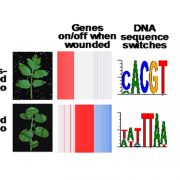
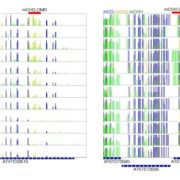
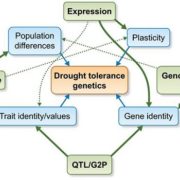

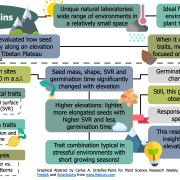
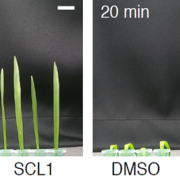


Leave a Reply
Want to join the discussion?Feel free to contribute!